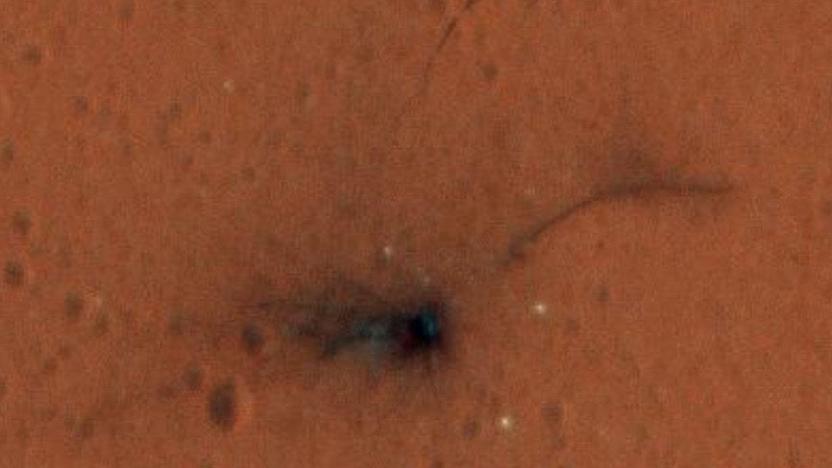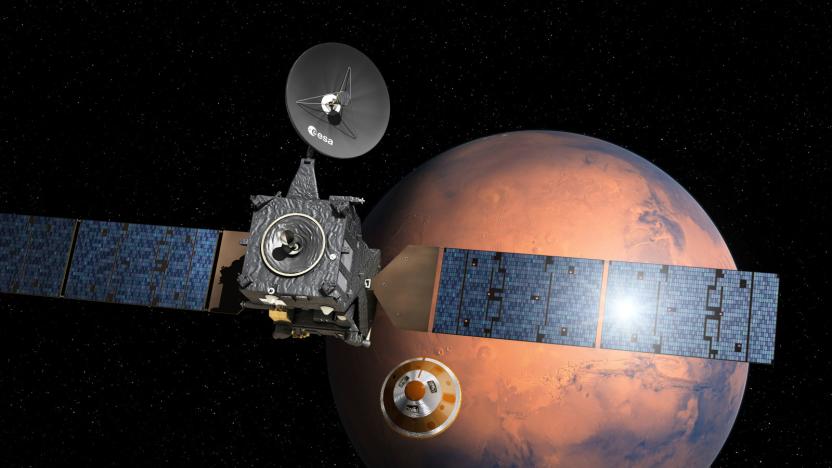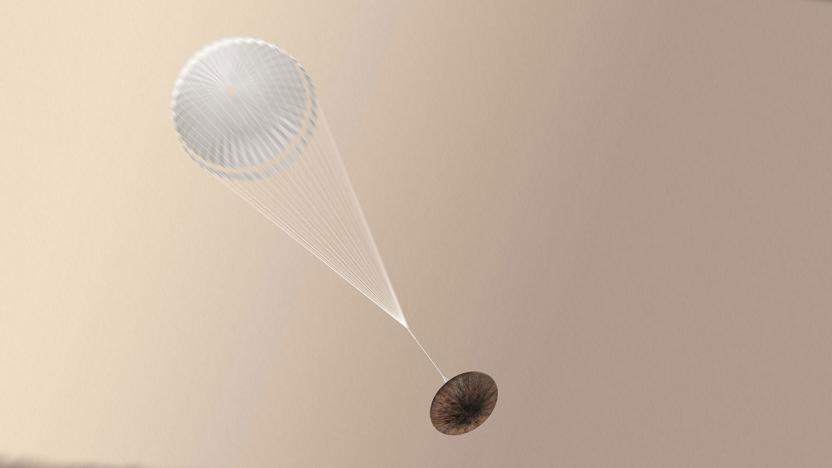schiaparelli
Latest

Doomed Mars lander wasn't equipped for supersonic conditions
Last October, the European Space Agency (ESA) lost contact with the ExoMars Schiaparelli lander as it descended to Mars' surface. A few days later, the NASA Mars Reconnaissance Orbiter snapped a picture of Schiaparelli's landing site and discovered where the lander crashed into the planet's surface. Now, an ESA inquiry board has finally pinpointed the cause of Schiaparelli's landing failure: a computer glitch due to extreme descent conditions.

Mars probe crashed because it misjudged where the ground was
The European Space Agency believes that it knows what caused its Schiaparelli lander to crash on the surface of Mars. It turns out that the spacecraft was hurtling towards the ground perfectly well until it, uh, forgot where the ground actually was. A sensor tasked with determining its altitude failed for a single second, but that was long enough to wreck the entire mission. Since the vessel believed that it had already arrived, it ran through the rest of the landing process and activated the on-ground sensors.

ESA releases first color photos of the EXOMARS crash site
The ESA's EXOMARS Schiaparelli lander crashed into the Red Planet's crust at more than 300 kph on October 19th, marking not only the end of its mission but also the surface itself. NASA's Mars Reconnaissance Orbiter (MRO) spotted the impact site quickly afterward but it wasn't until this week that its orbit brought the MRO back around. Using its High Resolution Imaging Science Experiment (HiRISE) camera, the MRO snapped the shot you see above.

NASA finds likely crash site for ESA's ExoMars probe
Just as we expected, NASA's Mars Reconnaissance Orbiter (MRO) has detected the potential crash site for the European Space Agency's missing ExoMars Schiaperelli probe. The MRO located a bright spot and dark patch on the Martian surface near the probe's planned landing area, which NASA believes to be the remnants of the probe's parachute and lander module, respectively. While we've only got a fairly low-resolution image so far, we should know more next week when the MRO passes over the area again with a higher resolution camera.

The ESA's ExoMars mission lander is still missing
The European Space Agency is still in the midst of investigating what happened to ExoMars' Schiaparelli lander, which seemed to disappear 50 seconds before it was supposed to land. At the presscon the agency held earlier, Andrea Accomazzo, ESA's head of planetary missions, said the ExoMars team already downloaded the data Schiaparelli sent to its mothership before it vanished. Unfortunately, we'll have to wait a bit more to get the whole picture, because it'll take some time to analyze the information.

The ESA's ExoMars mission looks like a success so far (Updated)
After a seven-month trip, the European Space Agency announced on Wednesday that its Schiaparelli module, ExoMars mission's landing craft, has deployed to the surface of Mars. The module jettisoned itself from its partner craft, the Trace Gas Orbiter, at approximately 10am ET and set down to the planet shortly thereafter. ESA Operations has not, however, yet confirmed that the lander survived its drop to the surface.

The European Space Agency will land on Mars in October
Nearly 13 years after the British spacecraft Beagle 2 went missing on Mars, the European Space Agency's Schiaparelli module will touch down on the red planet -- assuming everything goes according to plan, that is. The module, which launched with the ExoMars Trace Gas Orbiter in March, will serve primarily as a test bed for the descent and landing systems and is expected reach the surface on October 19th.




